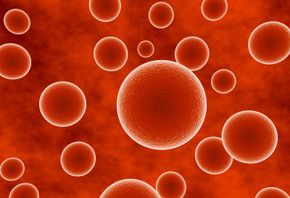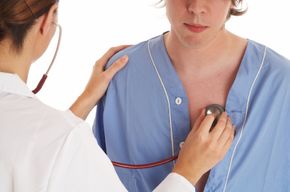The human body is approximately 60 percent water, which is essential to almost every life process. But sometimes a condition called fluid overload can occur, in which more fluid (primarily water) is going into your body than is coming out.
The chief cause of fluid overload is heart failure, a condition in which the heart muscle loses its ability to pump adequately. As the heart's contractions (beats) become weaker and less able to pump out the blood that enters the heart, blood backs up in the veins, causing fluid buildup in the body's tissues. The kidneys' ability to eliminate excess sodium and water is also affected by heart failure, further increasing the body's fluid congestion.
Advertisement
Fluid overload can also occur as a result of some other health conditions, including kidney disease and liver disease. It can also be a side effect of some medications.
Excess fluid can build up in various locations in your body, leading to a condition called edema. Edema is swelling that usually occurs in the feet, ankles and legs (where it's called peripheral edema), but it also can occur in the lungs (where it's called pulmonary edema) and in the abdomen (where it's called ascites).
Fluid buildup can also cause increasing fatigue. You may begin to feel tired after performing normal daily activities or walking even a short distance. When fluid overload is not too severe, it can be treated with a program of diet and lifestyle changes.
Heart failure occurs predominately in the elderly, but it can affect people of any age. Not surprisingly, since the number of older Americans is growing, the number of heart failure diagnoses each year is increasing at almost 10 percent.
Heart failure can be characterized by the side of the heart that's weakened -- based on that, patients can develop edema in different places in their bodies. When the right side of the heart is weakened, oxygen-poor blood tends to back up in the veins. As a result, fluid buildup tends to occur in the lower body (legs and feet), and sometimes in the abdomen. When the left side of the heart is weakened, oxygen-rich blood tends to back up in the lungs, resulting in fluid buildup there.
On the next page, we'll learn about the symptoms of edema.
Advertisement


